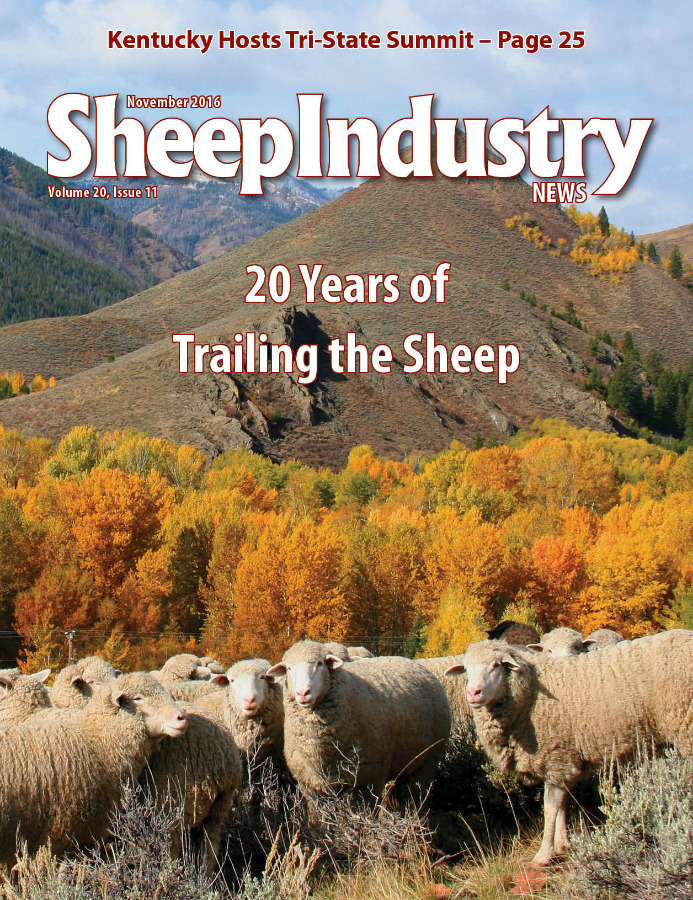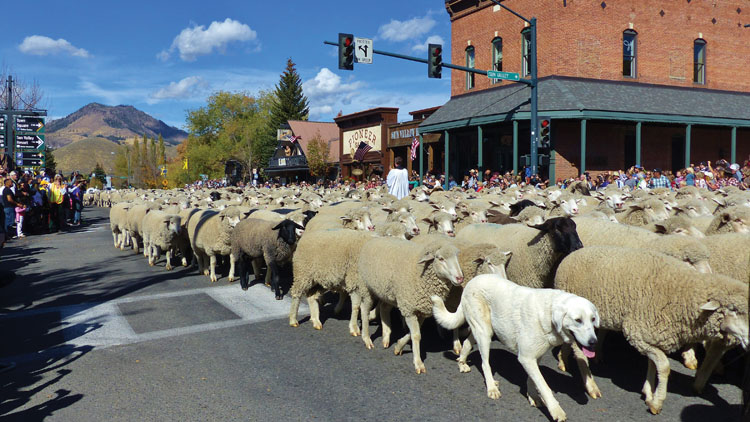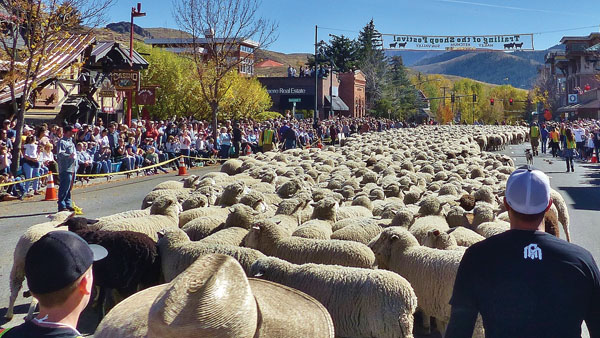
- November 2016
- President’s Notes
- Better Genetics Equals More Profit
- Thomans Concede Allotments
- 20 Years of Trailing the Sheep
- Celebrating Fall at Savage Hart Farm
- New Staff, Consultants on ASI Payroll
- ASI News
- Tri-State Summit Celebrates Growth
- Young Entrepreneur: Matt Anderson
- Knowles Named to Scientific Panel
- Range Productivity Study Complete
- USDA Confirms Screwworm in Florida
- Market Report
- Obituary
20 Years of Trailing the Sheep
 For two decades, Trailing of the Sheep has celebrated central Idaho’s traditional migration of sheep from high mountain summer pastures to winter grazing lands. The festival offers thousands of attendees from all across the world an opportunity to celebrate the 150-plus year tradition of moving the sheep.
For two decades, Trailing of the Sheep has celebrated central Idaho’s traditional migration of sheep from high mountain summer pastures to winter grazing lands. The festival offers thousands of attendees from all across the world an opportunity to celebrate the 150-plus year tradition of moving the sheep.
In the fall of 1996, John and Diane Peavey invited people to meet for coffee at a local café and then help walk with the sheep through the valley to learn about this historic tradition of trailing the sheep. Along the way, they shared stories of the rich history, heritage and cultures of the Wood River Valley. It was small, informal and educational. People loved it.
Twenty years later, that intimate gathering is now a five-day festival that has been recognized as a top tourist attraction by newspapers, magazines and travel websites all around the world.
The festival has expanded greatly from its humble beginnings, yet the goals and objectives remain the same – preserving the stories and history of sheep ranchers and herders, celebrating the rich cultures of the past and present, and entertaining and educating children and adults about the production of food and fiber that have sustained local economies for generations.
Checking Another Event Off Our Personal Bucket Lists
BURTON PFLIGER
ASI President
Tradition, customs, old world culture and regional history were on full display at the 20th Annual Trailing of the Sheep held in Ketchum, Idaho, on Oct. 6-9. It was a festival that my wife and I had long set on our bucket list to visit. At the invitation of John and Diane Peavey, we were able to fulfill our yearning.
As we strolled our way throughout the multitude of events, we encountered friendly people at each and every stop. Attendees ranged from Maine to California, Texas to Minnesota, all endearing a life experience with sheep. They reflected upon the remembrance of a parent or grandparent, who at one time in their life had granted to them the pastoral and peaceful influences of sheep and production agriculture. We encountered a gentleman from Tennessee – clearly in his 60’s – at a local café and struck up a conversation. He makes this trip annually in remembrance and honor of his father, who worked on the original construction of the Sun Valley Lodge. His father fell in love with the region, its people, customs and the sheep.
 One event that seemed to blend current experiences with the tradition of the past was the “Story Telling” series held on Friday evening. The series started three years ago by highlighting the “Pioneers” and their resilience and vision to stake a claim in this part of the world. Part two focused on the “Survivors,” those who stuck out the lifestyle and endured the great depression, world wars and the farm financial crisis of the 1980s.
One event that seemed to blend current experiences with the tradition of the past was the “Story Telling” series held on Friday evening. The series started three years ago by highlighting the “Pioneers” and their resilience and vision to stake a claim in this part of the world. Part two focused on the “Survivors,” those who stuck out the lifestyle and endured the great depression, world wars and the farm financial crisis of the 1980s.
The final series focused on today’s youth and the “Next Generation.” This started out by introducing five young adults on the stage. We learned about their operations, influences and vision for the future. They ranged from traditional operations unchanged since the 1880s to current contract grazing operations. Additionally, some 10 other young producers took the stage highlighting a particular story of humor or inspiration. The whole event took more than two hours to conclude, but no one was ready to leave and all would have stayed another two hours to revel in our past and our future.
Of course, the highlight was the trailing of some 1,500 range ewes down Main Street. These sheep deliberately forged their way down Main Street as if they knew intuitively that fresh feed and pasture lay ahead. As the ewes paraded by, one could detect the distinctive scent of wool and sheep as it briefly wafted into the air. Amongst and following the ewes were the guard and herding dogs. They too seemed oblivious to the thousands gathered to cheer and watch the annual celebration of history, tradition and culture.
Make plans of your own to attend a future celebration steeped in positive experiences and exposure for the American sheep producer and agriculture.

